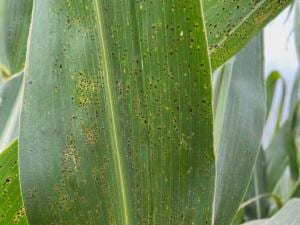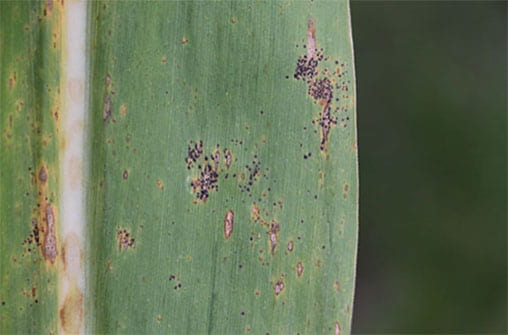By: Pierce Paul and Felipe Dalla Lana da Silva
Ear rots differ from each other in terms of the damage they cause (their symptoms), the toxins they produce, and the specific conditions under which they develop. GER leads to grain contamination with mycotoxins, including deoxynivalenol (also known as vomitoxin), and is favored by warm, wet, or humid conditions between silk emergence (R1) and early grain development. However, it should be noted that even when conditions are not ideal for GER development, vomitoxin may still accumulate in infected ears.
A good first step for determining whether you have an ear rot problem is to walk fields between dough and black-layer, before plants start drying down, and observe the ears. The husks of affected ears usually appear partially or completely dead (dry and bleached), often with tinges of the color of the mycelium, spores, or spore-bearing structures of fungus causing the disease. Depending on the severity of the disease, the leaf attached to the base of the diseased ear (the ear leaf) may also die and droop, causing affected plants to stick out between healthy plants with normal, green ear leaves. Peel back the husk and examine suspect ears for typical ear rot symptoms. You can count the number of moldy ears out of ever 50 ears examined, at multiple locations across the field to determine the severity of the problem.

Continue reading →


 By: Stephanie Karhoff
By: Stephanie Karhoff




